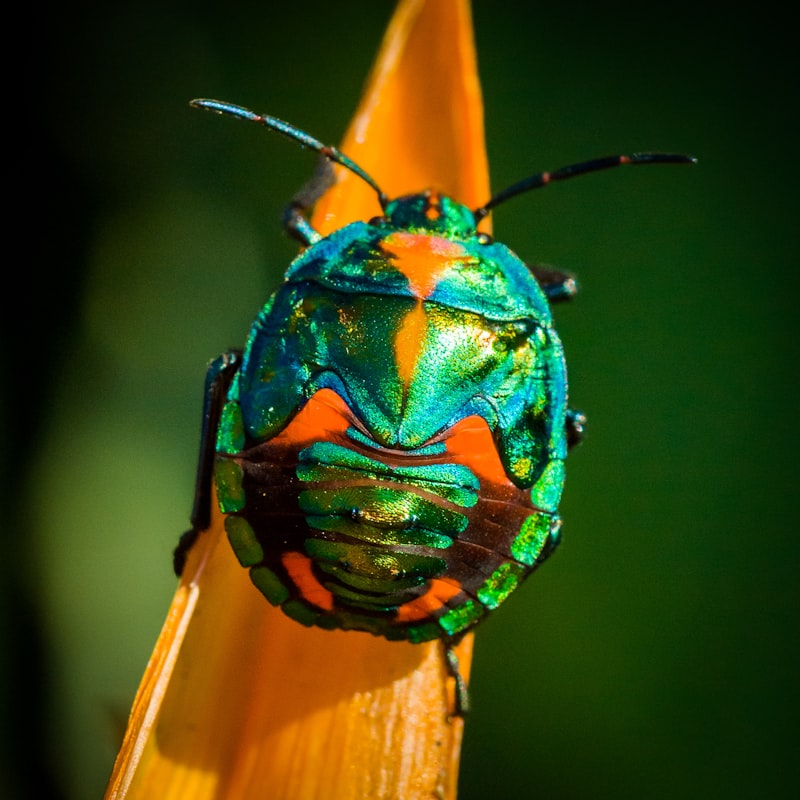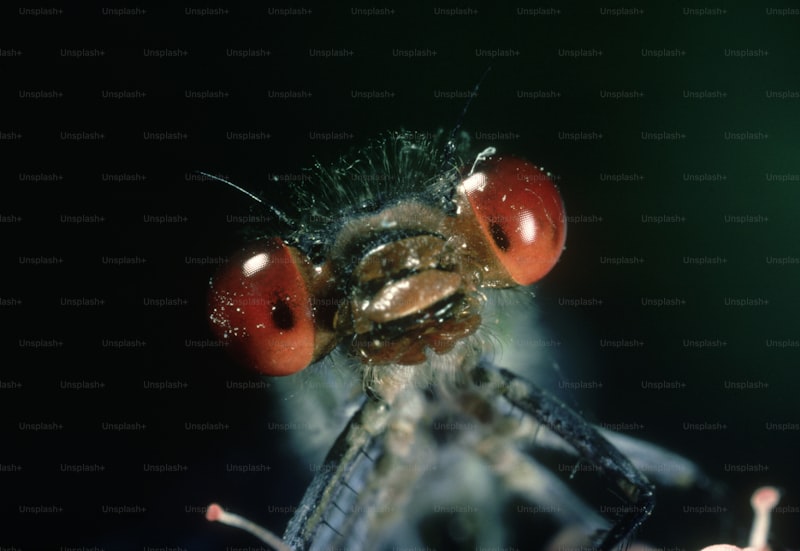Ever wondered how insects find their perfect match in the vast world of nature? The neurobiology of mate selection in insects offers a fascinating glimpse into this intricate process. Insects, despite their small size, have developed sophisticated mechanisms driven by their nervous systems to ensure successful reproduction.
When it comes to choosing a mate, insects rely heavily on sensory cues. These can range from pheromones, which are chemical signals released by one insect to attract another, to visual and auditory signals. For instance, male fireflies use their bioluminescent flashes to attract females in a spectacular display of courtship.
The brain, or rather the equivalent structure in insects, plays a crucial role in processing these sensory signals. It decodes the messages received and helps the insect make a decision on whether to pursue a potential mate. This decision-making process is often finely tuned through evolution to maximize reproductive success.
Interestingly, mate selection in insects isn’t solely about finding any partner but often about finding the best possible genetic match. Some species exhibit complex behaviors where males compete with each other to secure the attention of females. This competition can involve intricate dances, fights, or even offerings of gifts like food or other resources.
The neurobiology of mate selection in insects reveals a world of sensory-driven decision-making that ensures the continuation of species. By understanding these mechanisms, scientists gain insights into broader evolutionary processes and how intricate behaviors have evolved over millions of years.
Unveiling the Secrets: How Insect Brains Navigate the Maze of Mate Selection
Insects, despite their diminutive size, exhibit astonishing behavioral patterns when it comes to finding a partner. Take the male fireflies, for instance. These bioluminescent marvels flash their unique light patterns to attract females. Their brain processes these signals swiftly, ensuring they communicate effectively in the darkness of the night.
But how do these insects decode the signals amidst the cacophony of other fireflies and environmental stimuli? It all boils down to their specialized neural networks, akin to a finely-tuned radio receiver filtering out unwanted noise to catch a clear signal. This selective processing enables them to pinpoint potential mates with remarkable accuracy.
In the case of butterflies, it’s not just about seeing vibrant colors or graceful flight patterns. Their brains are wired to evaluate the chemical signatures of potential partners. This intricate chemical communication involves detecting pheromones released by females, which males interpret through their highly sensitive olfactory systems. It’s like deciphering a complex language that guides them towards their reproductive success.
Ants, on the other hand, rely heavily on intricate social cues within their colonies. Their brains are adept at recognizing specific pheromone trails laid down by other ants, guiding them to food sources or potential mates. This communal navigation of the maze ensures the colony’s survival and growth, highlighting the adaptive brilliance of their miniature brains.
Decoding the Love Potion: Neurobiological Insights into Insect Mate Attraction
Have you ever wondered what makes insects so irresistibly attracted to their mates? It turns out, there’s more to it than meets the eye. Scientists have delved deep into the neurobiology behind insect mate attraction, revealing fascinating insights into what drives this natural phenomenon.
At the heart of it all lies a complex interplay of chemicals and receptors within the insect brain. Much like a carefully crafted love potion, these neurochemicals play a pivotal role in stimulating attraction and guiding mating behaviors. One key player in this intricate biochemical dance is the pheromone—a chemical signal emitted by one insect to attract another of the same species.
Imagine pheromones as the secret whispers of desire in the insect world. They act as potent messengers, conveying specific information about an insect’s species, sex, and even its reproductive status. When released into the air, these chemical cues trigger a cascade of responses in the receiving insect’s brain, setting off a chain reaction of attraction and courtship.
But the story doesn’t end there. Insect brains are equipped with specialized neural circuits that are finely tuned to detect and process these pheromonal signals. These circuits act like a sophisticated radar system, honed over millennia of evolution to ensure successful reproduction. Through this neural processing, insects can decipher the subtle nuances of pheromonal communication, allowing them to distinguish potential mates from other members of their species.
Think of these neural circuits as the brain’s own love detectives, deciphering the intricate language of attraction encoded in pheromones. They enable insects to navigate complex environments, locate suitable mates, and engage in elaborate courtship rituals—all driven by the primal urge to reproduce and ensure the survival of their species.
In essence, the neurobiological insights into insect mate attraction unveil a mesmerizing world of chemical signals, neural pathways, and evolutionary adaptations. It’s a testament to nature’s ingenuity and the profound ways in which biology shapes behavior. By unraveling these mysteries, scientists not only deepen our understanding of insect communication but also gain valuable insights into broader questions of evolution and species survival.
So, the next time you observe a butterfly gracefully dancing in the air or ants communicating in intricate patterns, remember the hidden world of neurobiology at play. It’s a world where love potions aren’t brewed in cauldrons but are instead woven into the very fabric of an insect’s existence, driving the timeless dance of attraction and reproduction.
From Pheromones to Preferences: The Neurological Circuitry of Insect Courtship
Imagine a male moth catching wind of a female’s pheromones from afar. These chemical signals act as nature’s love notes, triggering a cascade of reactions in his brain. It’s like a secret language only they understand, where each molecule whispers attraction and possibility.
As he draws closer, his antennae pick up the scent, sending signals to his brain’s olfactory center. This isn’t just about detecting a smell—it’s about decoding a message that tells him she’s nearby, perhaps just around the corner of a leaf or flower.
But courtship isn’t just about chemical cues; it’s about timing and finesse. The male moth, now in visual range of his potential mate, begins a delicate display of fluttering wings and rhythmic movements. These gestures aren’t random; they’re choreographed by neural pathways that respond to visual stimuli and drive his behavior towards courtship.
Meanwhile, the female moth isn’t passive either. Her brain evaluates his display, weighing his genetic fitness and the quality of his pheromonal cues. If impressed, she may respond with her own signals, continuing the dialogue of attraction through a dance of antennae and subtle movements.
Insects like moths and butterflies may seem worlds apart from us, but in matters of courtship, their neural processes bear remarkable similarities to our own romantic pursuits. The dance of attraction, governed by neurological circuitry honed through evolution, underscores the universal drive to find a suitable partner.
From pheromones swirling in the air to the synchronized movements that seal the deal, insect courtship reveals the fascinating intersection of biology and behavior. It’s a testament to the power of evolution’s fine-tuning, where even the smallest creatures navigate the complexities of love with astonishing grace and precision.
Brainy Bees and Wily Wasps: Neurobiology Sheds Light on Insect Mate Choice
Bees, renowned for their complex social structures, exhibit a remarkable cognitive capacity in mate selection. Neurobiological research reveals that honeybees, for instance, rely on intricate chemical cues and behavioral signals to identify suitable mates. Their brains, despite being tiny, are adept at processing sensory information swiftly, enabling them to navigate complex mating rituals with precision.

On the other hand, wasps, often perceived as more solitary creatures, also exhibit intriguing mating behaviors. Neurobiologists have found that wasps rely heavily on visual cues and pheromones during mate selection. Their neurobiology facilitates rapid decision-making, crucial in competitive mating environments where quick responses to stimuli can determine reproductive success.

What makes these findings particularly fascinating is the parallel drawn between insect neurobiology and human decision-making processes. Just as humans rely on complex cognitive mechanisms to evaluate potential partners, bees and wasps demonstrate sophisticated neural processes tailored to their ecological needs.
Moreover, the implications extend beyond mere curiosity. Understanding the neurobiology of mate choice in insects offers insights into broader evolutionary processes and ecological dynamics. It underscores the adaptive significance of cognitive abilities in navigating reproductive challenges in diverse environments.
Frequently Asked Questions
What role do pheromones play in insect mate selection?
Discover how pheromones guide insect mate selection processes. Learn about the pivotal role these chemical signals play in attracting mates, ensuring species survival through effective communication.
What are the neural mechanisms underlying mate choice in insects?
Learn about the neural mechanisms that drive mate choice in insects, exploring how sensory cues and neural circuits influence selection processes.
How does the neurobiology of mate selection differ between insect species?
Explore how the neurobiology of mate selection varies across insect species, highlighting distinct mechanisms and evolutionary adaptations that influence mating behaviors.
Can environmental factors influence insect mate preferences?
Environmental factors can indeed influence insect mate preferences. Factors such as temperature, humidity, and the presence of specific plants or pheromones can affect how insects choose their mates. These influences are crucial in understanding insect behavior and population dynamics.
How do insects recognize potential mates based on visual cues?
Learn how insects use visual cues to identify potential mates, exploring their unique adaptations and behaviors in recognizing suitable partners.


